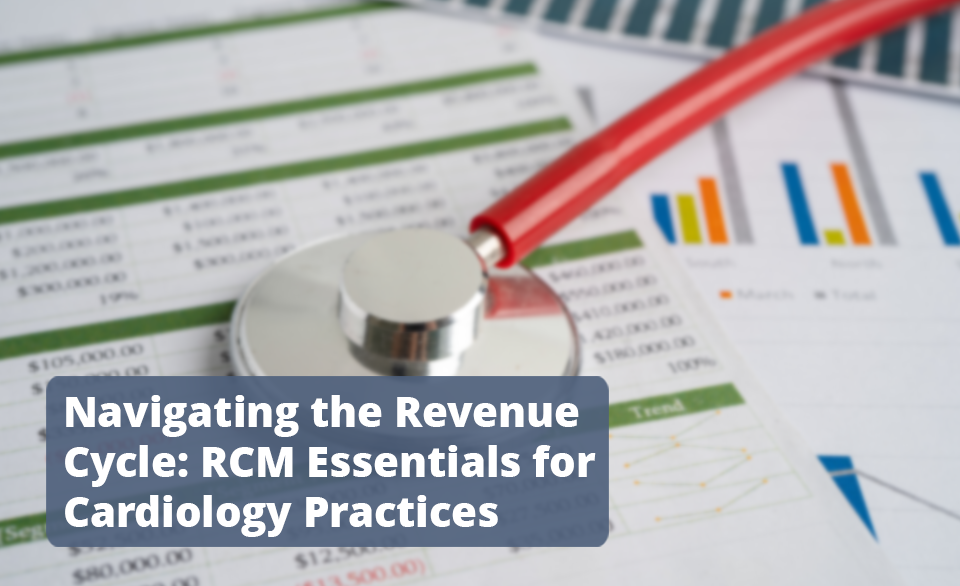Navigating the Revenue Cycle: RCM Essentials for Cardiology Practices

Understanding Revenue Cycle Management for Cardiology Practices
Overview of Revenue Cycle Management
Revenue Cycle Management (RCM) refers to the financial processes that healthcare practices, including cardiology clinics, use to track patient care episodes from registration and appointment scheduling to billing and payment collection. It encompasses a series of steps that ensure that services provided are accurately documented, billed, and paid for in a timely manner.
The core components of RCM include:
| RCM Component | Description |
|---|---|
| Patient Registration | Capturing patient demographics and insurance information |
| Charge Capture | Recording the services provided during patient visits |
| Coding | Translating services into universally accepted codes |
| Billing | Generating claims for services rendered |
| Claims Management | Tracking claims submitted to payers |
| Payment Processing | Collecting payments from patients and insurance companies |
Each of these steps plays a crucial role in the overall revenue cycle and impacts the financial health of cardiology practices. Efficient RCM ensures that practices receive appropriate reimbursement for services rendered.
Importance of RCM for Cardiology Practices
For cardiology practices, effective revenue cycle management is essential for maintaining financial stability. It enables these practices to optimize their billing processes, reduce claim denials, and improve cash flow. Key reasons highlighting the importance of RCM for cardiology include:
| Benefit | Description |
|---|---|
| Improved Cash Flow | Streamlined processes lead to quicker reimbursements from payers |
| Reduced Billing Mistakes | Accurate coding and billing minimize errors and denials |
| Enhanced Patient Satisfaction | Efficient billing processes positively influence patient experiences |
| Compliance | Adherence to healthcare regulations and payer requirements is ensured |
| Financial Reporting | Access to valuable financial data aids in strategic planning |
Healthcare professionals, including doctors, practice managers, and medical staff, need to understand that a well-managed revenue cycle directly impacts the profitability and sustainability of their practice.
Key Components of RCM for Cardiology Practices
Revenue Cycle Management (RCM) is a critical process for cardiology practices, involving several interconnected components that ensure the efficient management of finances. The following sections outline the key components essential for optimizing RCM in cardiology practices.
Patient Registration and Scheduling
The initial step in the revenue cycle begins with patient registration and scheduling. Proper management of this stage is vital as it sets the foundation for accurate billing and efficient patient flow.
Key aspects include:
- Collecting comprehensive patient information
- Verifying insurance coverage eligibility
- Scheduling appointments according to provider availability and patient needs
An organized scheduling system minimizes no-shows and cancellations, enabling better resource management and revenue generation.
| Key Considerations | Importance |
|---|---|
| Comprehensive patient information | Reduces errors in billing |
| Insurance verification | Ensures claim approval |
| Efficient scheduling | Increases practice revenue |
Coding and Billing Processes
Accurate coding and billing are crucial for capturing the services provided to patients correctly. Coding involves translating medical services into standardized codes for reimbursement purposes.
- ICD-10 codes: Used for diagnosis
- CPT codes: Utilized for procedures and services
Thorough knowledge of coding guidelines specific to cardiology enhances revenue capture and minimizes claim denials. Practice staff should receive ongoing training to stay updated with the latest coding changes and regulations.
| Code Type | Description |
|---|---|
| ICD-10 | International Classification of Diseases for diagnoses |
| CPT | Current Procedural Terminology for procedures |
Claim Submission and Adjudication
Following accurate coding, the next step is claim submission. This involves sending claims to insurance payers for reimbursement.
Effective claims management includes:
- Timely submission of claims
- Monitoring of claim status
- Responding to any requests for additional information
Adjudication is the process by which the insurance company reviews claims for validity. Understanding the adjudication process can help practices resolve issues quickly and achieve faster payments.
| Adjudication Process Steps | Explanation |
|---|---|
| Review | Insurance evaluates the claim |
| Decision | Claim is approved or denied |
| Notification | Practice is informed of the decision |
Payment Posting and Denial Management
The final stages of the revenue cycle involve payment posting and managing claim denials. Payment posting is the process of recording payments received from insurance and patients.
Timely and accurate posting helps practices track outstanding balances and financial performance.
For denial management:
- Identify common reasons for denials
- Appeal denied claims promptly
- Implement strategies to reduce future denials
By focusing on effective denial management, practices can improve cash flow and reduce the time spent on resolving unpaid claims.
| Denial Management Strategies | Benefits |
|---|---|
| Identify common denial reasons | Reduces future denials |
| Timely appeals | Improves cash flow |
| Staff training | Enhances efficiency |
By understanding and optimizing these key components of RCM for cardiology practices, healthcare professionals can enhance financial management and contribute to the overall success of their practices.





